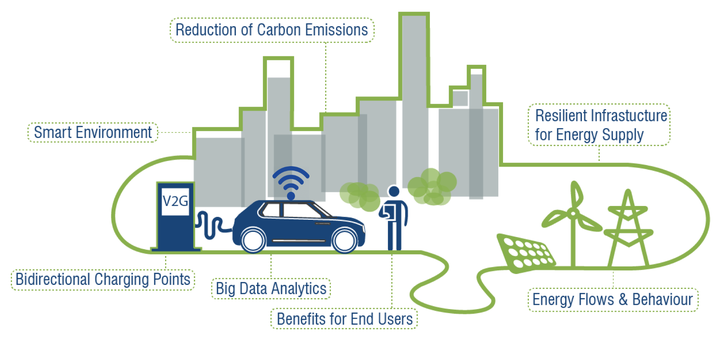Shared Autonomous Electric Vehicle Fleets with Vehicle-to-Grid Capability: Economic Viability and Environmental Co-benefits

Abstract
Vehicle-to-Grid (V2G) services utilize idle electric vehicle (EV) batteries as distributed energy storage units for the power grid to stabilize the fluctuating demand. The commercial implementation and deployment of V2G services are hindered by concerns about battery degradation, inconvenience, distrust, and further range anxiety, making private mainstream EV owners reluctant to participate in V2G program offered by utilities. The centralized operation and fleet-level ownership of shared autonomous electric vehicles (SAEV) can alleviate these barriers. This paper examines the economic and environmental co-benefits of V2G services in SAEV fleets, using results from operational simulations in a mid-size city (Ann Arbor, MI). We present a life-cycle assessment framework by considering SAEV fleets with 100-mile short-range (SAEV100) and 250-mile long-range (SAEV250) powertrain vehicles and compare the trade-offs of higher vehicle-mile-traveled (VMT) and addi- tional infrastructure requiem nets in the electrified fleet with SAV counterpart. Incorporating a 30-year time- frame, we show that from an economic point of view, the operating cost of the SAEV fleet is 3.4%-8.4% higher than SAV fleet. However, providing V2G service can reduce the cost of SAEV250 fleet by 19.6% compared to SAV fleet by generating revenue, thus making it economically feasible to replace the SAV fleet. We find that on average, V2G service yields a revenue of $2,272 per vehicle annually while saving 66.5 tons of GHG emissions per vehicle per year. We also conduct a thorough sensitivity analysis to quantify the uncertainty of results from key parameters. Finally, we highlight the major opportunities for maximizing the environmental and economic performance of SAEV fleets under the provision of V2G services over the long term.